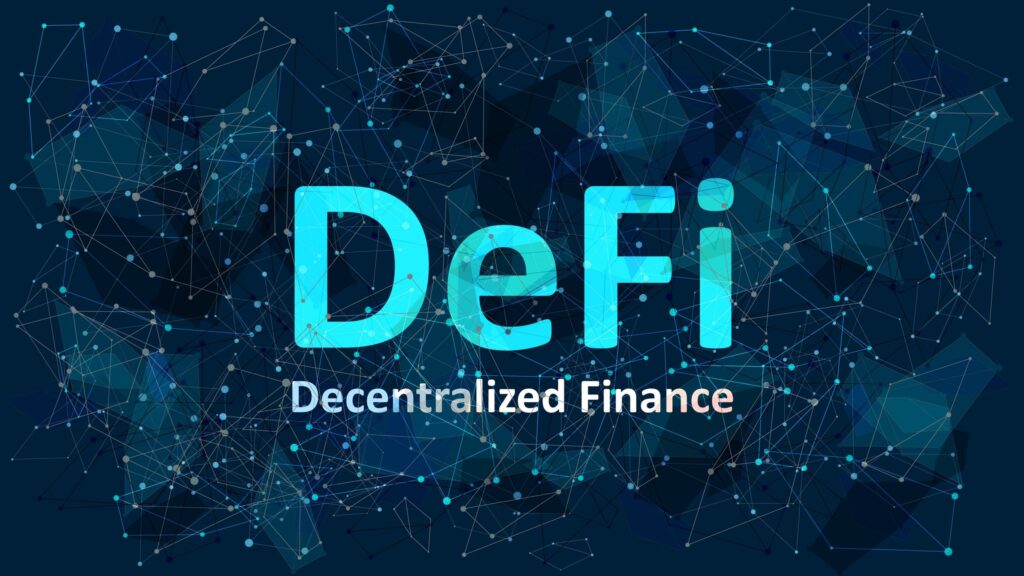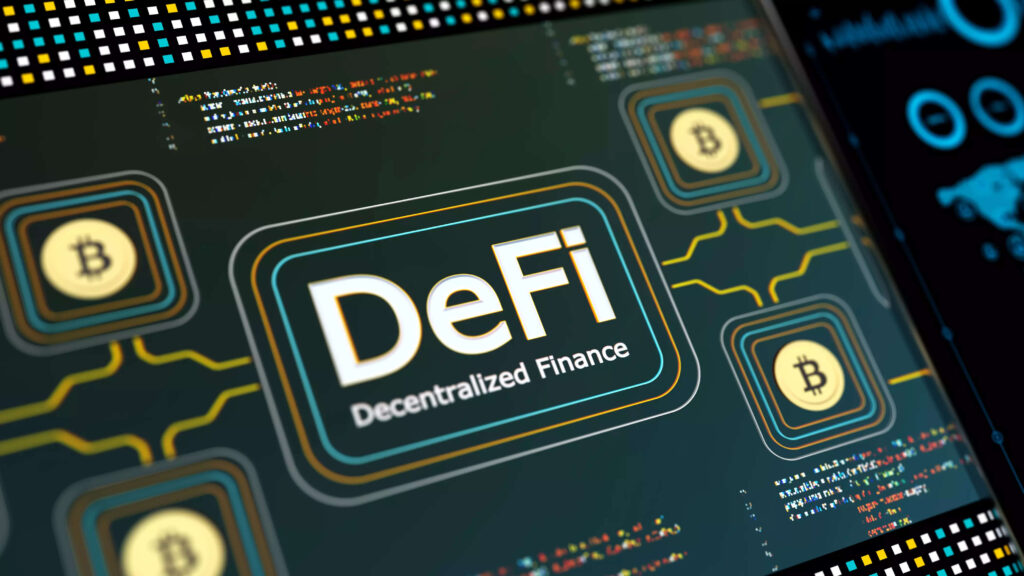
The financial world is undergoing a seismic shift, driven by the advent of cryptocurrencies and the revolutionary concept of Decentralized Finance (DeFi). DeFi has emerged as a disruptive force challenging traditional financial intermediaries and redefining how we transact, invest, and manage our finances. In this comprehensive blog post, “Cryptocurrency and Decentralized Finance (DeFi): Disrupting the Financial System” we will explore the concept of DeFi, its core principles, and the ways in which it is reshaping the conventional financial sector.
Understanding Decentralized Finance (DeFi)
What is DeFi?
Decentralized Finance, or DeFi, refers to a decentralized ecosystem of financial applications and services built on blockchain technology. Unlike traditional finance, which relies heavily on intermediaries such as banks and financial institutions, DeFi operates on open, permissionless blockchain networks, allowing users to access financial services directly without the need for intermediaries.
At the heart of DeFi are smart contracts, self-executing agreements with the terms of the contract directly written into code. These smart contracts automate various financial processes, such as lending, borrowing, trading, and yield farming, removing the need for intermediaries and reducing the associated costs.
Key Principles of DeFi
DeFi is guided by several key principles that set it apart from traditional finance:
Open Access: DeFi is accessible to anyone with an internet connection and a compatible wallet, fostering financial inclusion on a global scale.
Transparency: Transactions and financial data on DeFi platforms are recorded on public blockchains, ensuring transparency and accountability.
Security: DeFi relies on blockchain’s robust security features, making it resistant to fraud and hacks.
Interoperability: DeFi applications can often interact with one another, creating a seamless financial ecosystem.
Permissionless: Users can participate in DeFi without needing approval from any central authority, democratizing finance.
Smart Contracts and DeFi
Smart contracts are the building blocks of DeFi. These self-executing contracts enable trustless interactions by automatically enforcing the terms and conditions of agreements. For example, in a decentralized lending platform, a smart contract can hold collateral and release it when the loan is repaid, all without the need for a traditional lender.
The Disruption of Traditional Financial Intermediaries
Banks and Financial Institutions
One of the most significant disruptions caused by DeFi is the challenge it poses to traditional banks and financial institutions. DeFi platforms offer services such as savings, lending, and payments, which were once exclusively provided by banks. Users can earn interest on their crypto holdings, borrow assets without credit checks, and transfer funds globally, all through DeFi protocols, bypassing banks.
Payment Processors
Payment processors, like Visa and Mastercard, have long dominated the payment industry. However, DeFi’s borderless and low-cost transactions are making inroads into this space. Stablecoins, which are cryptocurrencies pegged to the value of traditional currencies, enable instant and low-fee cross-border payments without relying on traditional payment processors.
Asset Managers
Traditional asset management involves intermediaries like mutual funds and hedge funds that charge management fees. In contrast, DeFi offers decentralized asset management through protocols like automated market makers (AMMs) and yield aggregators. Users can participate in liquidity pools or yield farming to earn rewards without the need for asset managers.
Advantages of Decentralized Finance
Accessibility and Inclusion
DeFi’s open and permissionless nature means that anyone with an internet connection can participate, irrespective of their geographical location or socioeconomic status. This accessibility empowers individuals who were previously excluded from the traditional financial system.
Transparency and Security
Transactions on DeFi platforms are recorded on public blockchains, providing transparency and traceability. Users can verify the integrity of smart contracts and the movement of assets, reducing the risk of fraud and manipulation.
Reduced Costs
DeFi eliminates many of the overhead costs associated with traditional financial intermediaries. Transactions on DeFi platforms are often faster and cheaper, as they bypass banks and payment processors.
Global Reach
DeFi operates on a global scale, allowing users to transact and access financial services from anywhere in the world. This global reach is particularly beneficial for cross-border payments and investments.
Challenges and Risks in DeFi
While DeFi holds immense promise, it is not without its challenges and risks:
Security Concerns
DeFi platforms are vulnerable to smart contract vulnerabilities and hacks. High-profile incidents of smart contract exploits have resulted in substantial financial losses for users. Security audits and rigorous testing are essential to mitigate these risks.
Regulatory Challenges
Regulatory authorities worldwide are grappling with how to regulate DeFi. The lack of intermediaries and the global nature of DeFi make it challenging for regulators to enforce existing financial regulations.
Smart Contract Vulnerabilities
Smart contracts are as secure as the code written for them. Any vulnerabilities in smart contracts can be exploited by malicious actors. The industry must continue to invest in auditing and improving smart contract security.
Popular DeFi Platforms and Use Cases
Decentralized Exchanges (DEXs)
DEXs allow users to trade cryptocurrencies with one another without the need for a centralised exchange. Platforms such as Uniswap and SushiSwap have grown in popularity because to their liquidity pools and automated trading capabilities.
Lending and Borrowing
DeFi lending platforms allow users to lend their cryptocurrencies and earn interest or borrow assets by providing collateral. Aave and Compound are examples of DeFi lending protocols that facilitate these services.
Yield Farming
In exchange for incentives, yield farmers provide liquidity to DeFi marketplaces. By engaging in liquidity pools, users may earn additional tokens or fees. Yearn Finance and Curve Finance, for example, provide yield farming prospects.

Conclusion
Decentralized Finance (DeFi) is undeniably changing the way we think about and interact with traditional financial systems. Its core principles of accessibility, transparency, and reduced costs are reshaping the financial landscape, challenging the dominance of banks, payment processors, and asset managers. However, DeFi is not without its challenges, including security vulnerabilities and regulatory hurdles. As the DeFi ecosystem continues to evolve, it holds the potential to provide financial empowerment to individuals worldwide and offer innovative solutions to longstanding financial problems.
In this rapidly evolving space, it’s crucial to stay informed and exercise caution while exploring the exciting possibilities that DeFi has to offer.
Disclaimer: Information provided in this blog is only for educational purposes and must not be considered financial advice. It is recommended to do your research and consult with your financial advisor.
For further insights, trends, and information about cryptocurrencies, sign-up at Coin-E-Coins.



No Comments